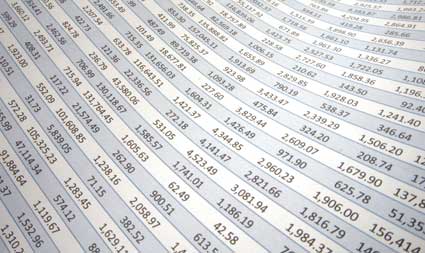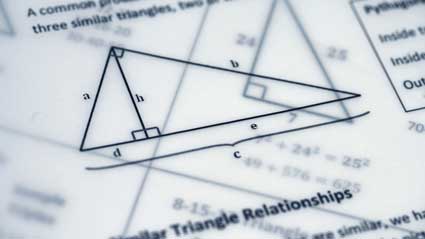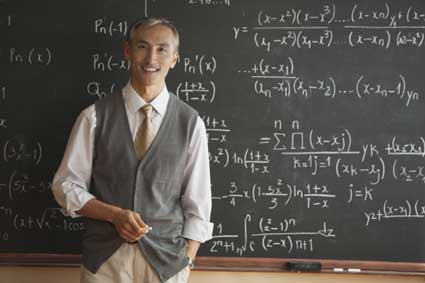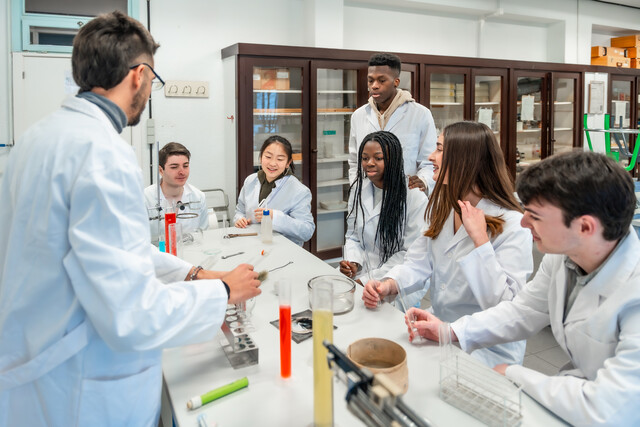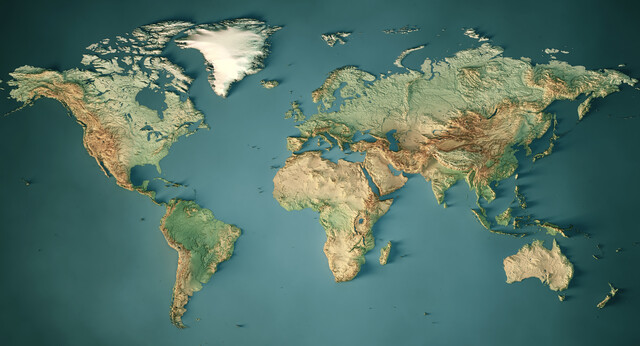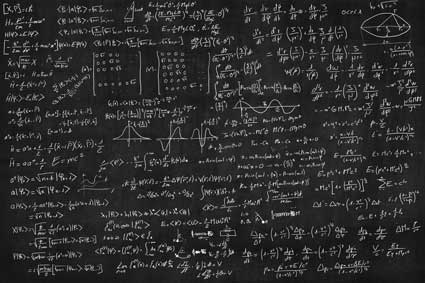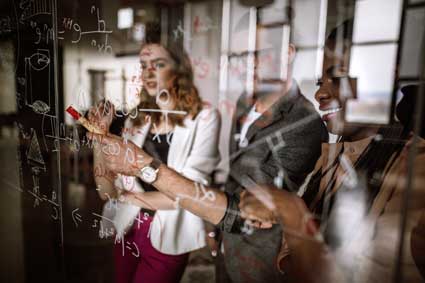Sir Isaac Newton in his book entitled, Philosophiae Naturalis Principia Mathematica, mapped the foundation for what is known today as classical mechanics.
Essentially, Newton's Laws of Motion explain the nature of the relationships that exist between the forces acting on a body and the motion of the body. In short, his laws provide a working understanding of how physical objects move.
When applying Newton's Laws of Motion, bear in mind that they describe only the motion of a body as a whole and only pertain to motions relative to a particular frame of reference.
While the following three Laws of Motion have been modernized, they are based upon the original versions introduced by Newton.
B. Newton's Laws of Motion. Introduction
First Law.
Objects in motion tend to stay in motion, and objects at rest tend to stay at rest unless an outside force acts upon them.
Second Law.
The rate at which the momentum of a body changes is directly proportional to the net force acting upon it, therefore, the direction of the change in momentum occurs in the direction of the net force.
Third Law.
To every action (force applied), there is an equal and opposite reaction (equal force applied in the opposite direction).
Note: While the combination of these three laws, along with Newton's Law of Gravity, provide a workable foundation for explaining the motion of everyday physical objects under everyday conditions, when applied to extremely high speeds or incredibly small objects, Newton's laws don't quite hold up. These inconsistencies were remedied by Einstein's Special Theory of Relativity for high speeds, and by quantum mechanics for small objects.
C. Newton's First Law. Law of Inertia
The central idea of Newton's First Law (also known as the "Law of Inertia" or "Galileo's Principle") revolves around the notion of constant velocity, defined as a constant speed in an unchanging direction.
The net force on an object is the vector sum of all the forces acting on the object. If there are zero forces acting upon an object, the motion of the object does not change.
In the First Law, Newton presents two clarifying points:
- An object that is not moving will remain motionless until acted upon by an outside force.
- An object that is in motion will not change velocity (including stopping) until acted upon by an outside force.
And, while the first point may seem quite obvious to most, the second point may require a bit more thought, everyone knows that things don't just keep moving forever.
We know that a soccer ball, when kicked across a playing field, eventually comes to a halt. However, Newton's thinking is that it does so only when there is a frictional force between the ball and the playing field. In the absence (or virtual absence) of such a force, the ball's motion or momentum is not hindered.
Historically speaking, the Law of Inertia is most often associated with Galileo, although Aristotle produced the first known description. Unlike Aristotle, however, Galileo put forth the notion that when a force acts upon a body, it determines acceleration rather than velocity. These insights were integrated into Newton's First Law, without force there is no acceleration, and therefore the body maintains at its present velocity.
While it is not easy to demonstrate the First Law, friction is cited as the usual culprit that causes a force to act upon a moving body. All in all, the law focuses on the fundamental matters (known as forces) that inflict change upon an object's motion trajectory.
D. Newton's Second Law. Law of Force and Motion
Newton's Second Law states that the degree to which an object's momentum is changed is directly proportional to the amount of force which is exerted upon the object.
It also states that the change in direction of momentum can be determined by the angle from which the force is applied. This is akin to when a car is hit. Police officers are able to come onto the scene after an accident and tell how the car was hit and from what angle, and therefore determine who was at fault. Their ability to break down the incident is based upon studying the direction of the car's position after it was hit and the location of the damage.
If the mass of an object in question is known to be constant, the definition of acceleration can be used to write this differential equation for force:In the aforementioned equation, a is the acceleration, F is force, m is mass, and k is the constant of proportionality. The product of mass and velocity is the momentum of the object.
Taking into account the nature of attraction, the Second Law affirms the following idea:
To every action there is always an opposed and equal reaction: or the mutual actions of two bodies upon each other are always equal, and directed to contrary parts.
When anything pushes on something else, there is an impact. For instance, if while gardening on a hard, dry patch of soil, you push down hard on your shovel, in turn, the shovel will make an impact upon the soil with an equal amount of force.
The changes made by these actions are equal. Though not equal in velocities, they are equal in the motions of the bodies. Because the motions are equally altered, the changes made to the respective objects are directly proportional.
E. Newton's Third Law. Law of Reciprocal Actions
Based on the law of conservation of momentum, the Third Law takes into account the notion that while forces may be equal, their accelerations (momentum) may not be. This can be illustrated by the demonstration in which a man drops both a large ball and a small peanut from a tall building. Due to the smaller mass of the peanut, hence, faster acceleration, it is predicted that the peanut will reach the ground sooner than the ball.
According to Newton's Third Law, the two forces, although considered to be opposites, are comprised of the same type of pull. For instance, should a car swerve while going around a sharp S-curve, then the road exerts a forward frictional force on the car's tires while there is an equal (and opposing) frictional force that is pushing the tires backward on the road.
And, though Newton may be best known for sitting under the apple tree and discovering gravity when the apple fell on his head, his three Laws of Motion also contributed a great deal to the emergence of physics and the latter day philosophies and laws which came about as a result of his findings.





